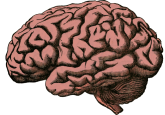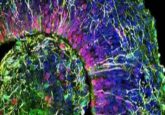Move over, there’s a new cell in town

A never-before-seen human brain neuron has been uncovered.

A reconstruction of the ‘rosehip neuron’, named due to the dense axon bundle surrounding its center appearing to look like a rose that has shed its petals. Credit: Boldog et al. Nature Neuroscience.
A team of researchers from a number of institutions, including the University of Szeged (Hungary) and the Allen Institute for Brain Science (WA, USA), have discovered a new type of human brain cell – the likes of which has never been seen before in rodents and other laboratory animals. The team hopes this new discovery could go some way to explaining what sets apart human brains from the rest.
“We really don’t understand what makes the human brain special,” explained Ed Lein, co-lead author and investigator at the Allen Institute. “Studying the differences at the levels of cells and circuits is a good place to start, and now we have new tools to do just that.”
The ‘rosehip neurons’ are inhibitory neurons and prevent the activity of other neurons in the brain. The article, published in Nature Neuroscience, details that the new neurons appear to attach only to a specific part of their cellular partner, which indicates they may be controlling information flow in a specialized way.
The team did not prove that these cells exist solely in human brains; however, they were not present in the brains of common laboratory animals, demonstrating the difficulty in utilizing animal brains to model human brains.
The research group from the University of Szeged utilized a classical neuroscience approach to examine properties and shapes of cells, whilst the group from the Allen Institute for Brain Science was researching from a genetic perspective, in order to determine how cells are unique from one another and how human brains differ from those of other animals.
They decided to collaborate when they realized they had both stumbled upon the same cell from the two different approaches, and it is believed to be one of the first studies to combine these two techniques in this way.
The team will now look to see if these cells are present in any other parts of the human brain and their potential implications in human disease, beginning with analyzing post-mortem brain samples from people with neuropsychiatric diseases.





